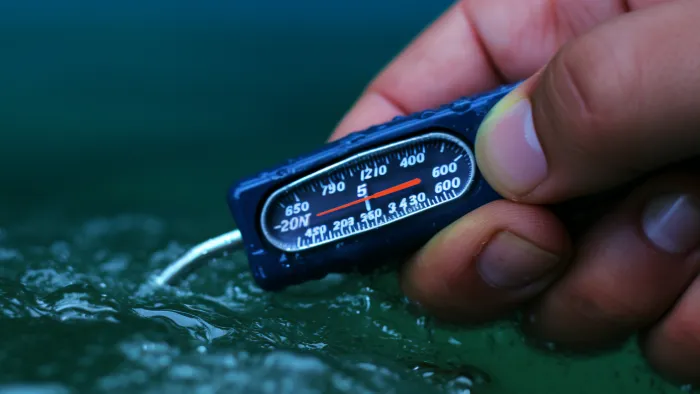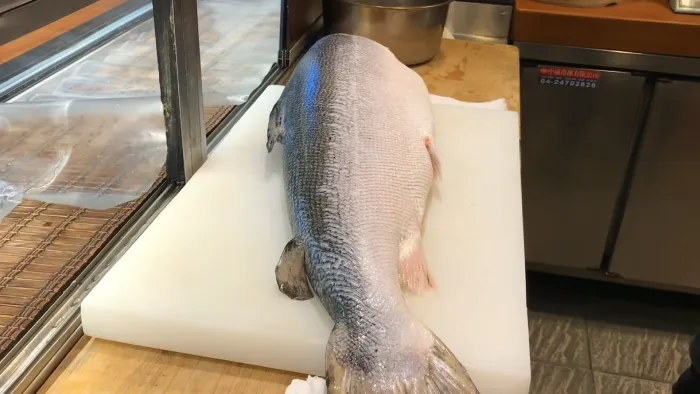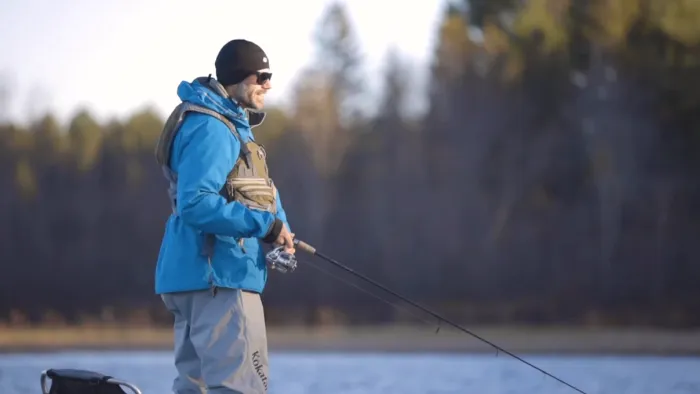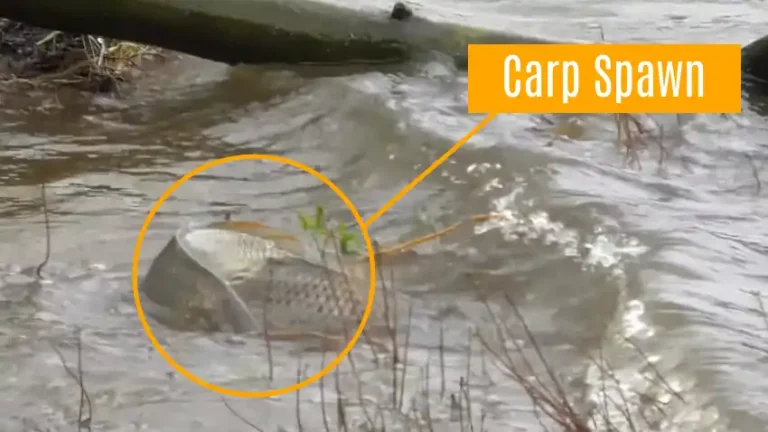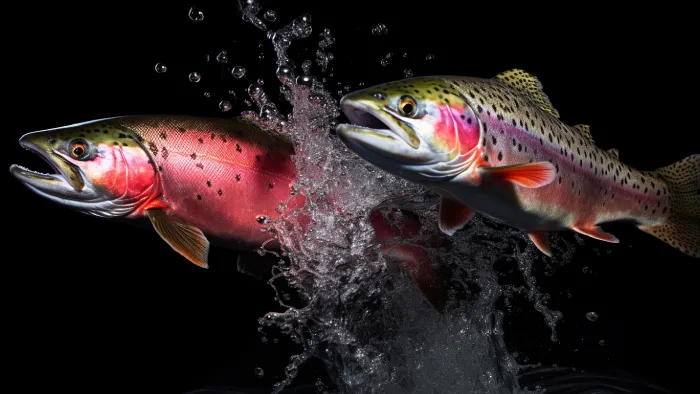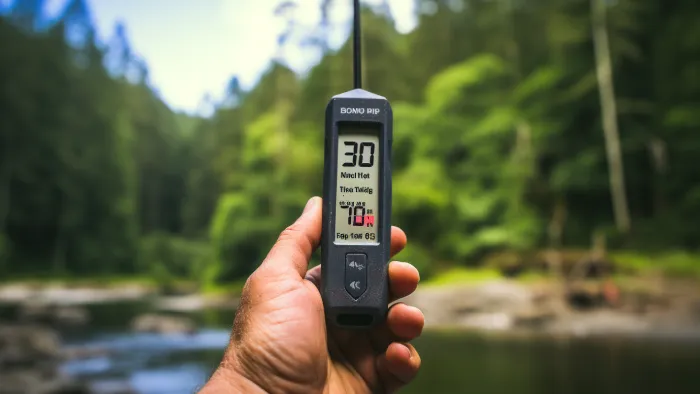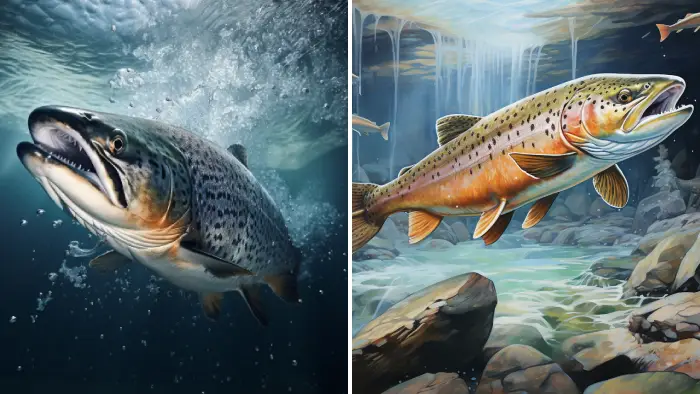How to Determine Water Temperature for Fishing: Follow 7 Steps
Do you want to improve your fishing skills? You should know that water temperature plays a key role. It affects fish behavior and determines where they are likely to be found. But how do you determine water temperature accurately?
Gather the necessary equipment, including a thermometer designed for underwater use. Then, choose the right location, ensuring it accurately represents the water temperature you want to measure.
Next, submerge the thermometer correctly, ensuring it is deep enough to provide an accurate reading. After retrieving and reading the thermometer, record the data to track changes in water temperature over time.
Throughout this article, we will explore the technique of using a thermometer to measure water temperature and discuss its importance in fishing. Get ready to reel in more success on your next fishing trip.
How Do You Determine Water Temperature for Fishing
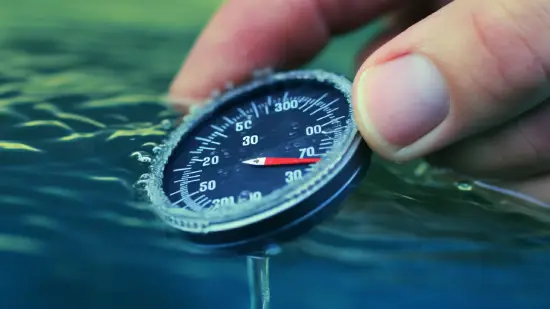
To determine the water temperature for fishing, you need to follow a series of steps.
- Step 1: Gather the necessary equipment
- Step 2: Choose the right location
- Step 3: Submerge the thermometer correctly
- Avoid direct sunlight
- Avoid boat and engine influence
- Choose the right depth
- Wait for stabilization
- Step 4: Retrieve and read the thermometer
- Step 5: Record the data
- Step 6: Consider additional factors
- Step 7: Use the information for fishing
Here is a breakdown of each step.
Step 1: Gather Necessary Equipment
First, ensure you have the following items before heading out for fishing: a fishing thermometer, a string or line, and a waterproof bag.
A reliable fishing thermometer is essential for determining water temperature accurately. Look for waterproof and durable models, as they will withstand the harsh conditions of fishing. Modern fish finders and sonar devices often have built-in temperature sensors, making it easier to get real-time temperature readings.
Attach a string or line to the thermometer to prevent losing it in the water. Finally, carry your thermometer in a waterproof bag to protect it from water damage.
With this equipment, you can gather precise data on water temperature and locate areas with optimal fishing conditions.
Step 2: Choose the Right Location
Once you have gathered the necessary equipment, it’s important to select a fishing spot that accurately represents the area you plan to fish in. Several rivers, streams, and lakes in Montana offer fly fishing opportunities.
Determining the water temperature is crucial for a successful fishing trip. Water temperature affects the behavior and location of fish, making it essential to choose the right location. During the spring and fall, Montana’s water is colder, while during the summer, it is warmer.
Factors such as depth and proximity to underwater structures can influence water temperature.
Step 3: Submerge the Thermometer Correctly
1. Avoid Direct Sunlight
When you’re trying to determine the water temperature for fishing, find a shady spot away from direct sunlight. Sunlight can significantly affect the accuracy of temperature readings by raising the surface temperature.
To obtain reliable data, position yourself where the thermometer is shielded from the sun’s rays. This will give you more precise information for making informed decisions about your fishing strategy based on the water temperature.
2. Avoid Boat and Engine Influence
To accurately determine the water temperature for fishing, avoiding the influence of the boat and engine is crucial. As mentioned earlier, these factors can affect the reading of the thermometer.
Therefore, ensure the thermometer is placed away from the boat’s hull and engine. This will help obtain a more precise and reliable water temperature measurement, facilitating better fishing strategies based on scientific data.
3. Choose the Right Depth
Make sure you pick the appropriate depth at which you expect the fish to be located and submerge the thermometer accordingly.
By measuring the water temperature at the desired depth, you can gather valuable data to aid in your fishing strategy.
Different fish species have specific temperature preferences, so knowing the temperature at their preferred depth can increase your chances of a successful catch.
Use this scientific approach to make informed decisions and optimize your fishing experience.
4. Wait for Stabilization
Allowing the thermometer to settle for a minute or so ensures that you obtain an accurate water temperature reading. This step is crucial as it provides you with valuable data that can greatly impact your fishing success.
Step 4: Retrieve and Read the Thermometer
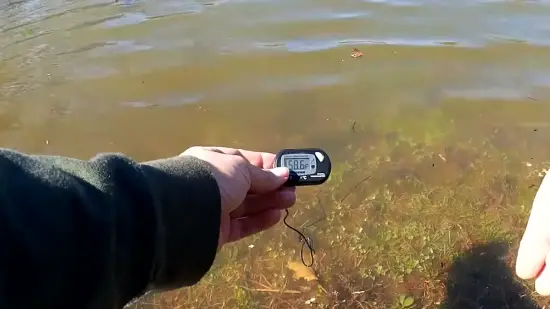
Once the thermometer has stabilized, carefully retrieve it and read the temperature. This step is crucial in determining the water temperature for fishing.
The accuracy of the measurement is essential for making informed decisions about fishing strategies and bait selection. Gently pull the thermometer out of the water, being careful not to disturb the surrounding environment.
Take note of the temperature displayed on the thermometer, which may be in either digital or scale format. Remember to record the temperature accurately for future reference and analysis.
Step 5: Record the Data
After retrieving and reading the thermometer, you’ll want to note down the temperature reading along with the date, time of day, and depth at which you measured it. Keeping a detailed record of this data is essential for analyzing patterns and improving your fishing techniques.
You can identify optimal fishing conditions and predict fish behavior by recording the temperature. Remember to use a standardized format for your notes, including the correct units of measurement. Consistent and accurate documentation will allow you to compare fishing trips and location data.
Step 6: Consider Additional Factors
When determining the ideal water temperature for fishing, it is important to consider additional factors. These factors include weather conditions, time of day, and seasonal variation.
Weather conditions, including temperature, wind speed, and precipitation, can greatly influence fish behavior and feeding patterns. Fish are sensitive to environmental changes, and weather conditions can impact their comfort and activity levels.
Similarly, the time of day can impact fish activity. Many species are more active during specific periods, such as early morning or evening. Understanding your target fish’s feeding habits and behavior patterns can help you choose the best time to fish.
Finally, seasonal variation plays a crucial role in fishing success. Fish behavior and habitat preferences can change yearly in response to water temperature, food availability, and spawning activities. Being aware of these changes and adjusting your fishing strategies accordingly can greatly improve your chances of success.
Step 7: Use the Information for Fishing
Once you’ve determined the water temperature, adapt your fishing strategy accordingly.
The water temperature plays a crucial role in fish’s behavior and feeding patterns. By understanding the preferred temperature ranges of the fish species you are targeting, you can increase your chances of success on the water.
For example, if the water temperature is within the preferred range for bass, you can use techniques that mimic the bass’s natural prey, such as crankbaits or topwater lures.
On the other hand, if the water temperature is outside the preferred range for bass, you may need to adjust your strategy and focus on other species that are more active in those conditions.
How does water temperature affect fishing?
When determining the water temperature for fishing, it’s important to understand how temperature affects the behavior of fish. Temperature plays a crucial role in fish’s metabolic rate and energy balance, which in turn influences their locomotor and feeding behavior.
For instance, warmer water temperatures can increase the activity level of fish, making them more likely to pursue and strike at bait or lures. On the other hand, colder water temperatures can cause fish to become lethargic and less inclined to feed.
Additionally, temperature affects the ability of fish to process and absorb nutrients from their food and store excess energy. Therefore, by considering the water temperature, you can better predict the behavior and feeding patterns of fish, ultimately increasing your chances of a successful fishing trip.
What temperature is too high for fish?
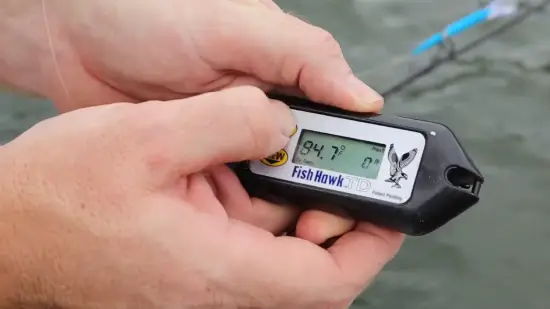
Different fish have different thermal preferences and can tolerate varying temperature ranges. However, as a general guideline, temperatures above 86 degrees Fahrenheit (30 degrees Celsius) for prolonged periods can be harmful to most fish species.
The oxygen demand surpasses the supply at such high temperatures, leading to hypoxia and possible mortality. It is crucial to monitor water temperature regularly, especially during hot summer months, and take appropriate measures to prevent overheating and ensure the well-being of aquatic organisms.
The Role of Water Temperature in Fishing Strategies
Determining water temperature is crucial for successful fishing. Understanding how temperature affects fish behavior and metabolism is essential for predicting their movement patterns.
Monitoring water temperature allows anglers to identify the optimum temperature range for specific fish species and adjust their fishing techniques accordingly. For instance, a case study on bass fishing revealed that when the water temperature reached 85°F, bass became less active and sought refuge in deeper, cooler waters.
By considering such data, anglers can strategically target areas with the right temperature conditions, increasing their chances of a fruitful fishing trip.

